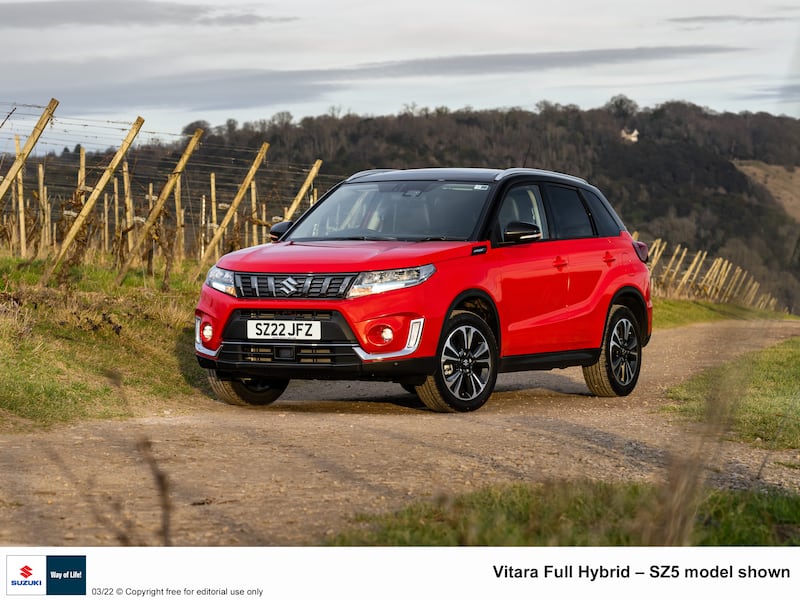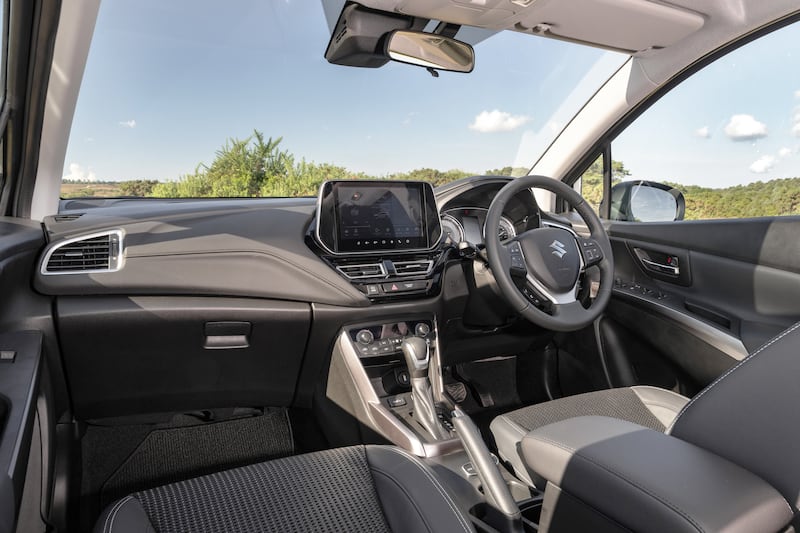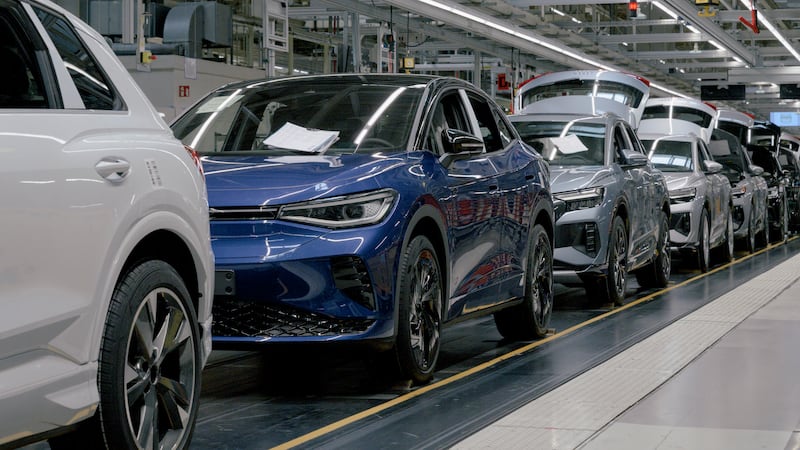It’s tempting to think of Suzuki as a small car maker, not to mention a maker of generally small cars. In the Irish market, it’s generally considered something of a minnow, but that’s to ignore Suzuki’s vast global footprint – in east Asia it’s little short of a giant, and overall it has so many customers that it was effectively able to shrug off a much-ballyhooed collaboration with Volkswagen when it felt that the Germans were asking for too much control. That’s without even mentioning the sheer earning power of its motorcycle and marine engines.
Suzuki still hasn’t given us an all-electric car, but that will change come 2025. The company has shown a concept car, the eVX (guess what? It’s a compact crossover…) and Suzuki is promising a 60kWh battery pack and a range stretching beyond 550km as part of a massive $35 billion global investment in electric motoring.
There are also rumours that the cute-as-a-button Suzuki Jimny – think a Mercedes G-Wagen but shrunk down to the dimensions of a Jack Russell puppy – will get a European return with electric (and possibly hybrid) power, as well as a four-door version. Suzuki will lean on an apparently-more-harmonious collaboration with Toyota to help create those cars and, yes, there will be electric motorbikes, scooters and even outboard motorboat engines too – those potentially with as much as 350hp.
That is for tomorrow, so to speak. What of today? Well, Alun Parry, Suzuki UK and Ireland’s head of communications, said: “A top-10 sales position in Ireland is a reasonable target for us in the next few years.” It certainly is, given that Suzuki finished 16th in the sales charts in January, a veritable nosebleed position for the brand ahead of the likes of Volvo and Mazda. The fact that it’s the last-man-standing offering a zero per cent finance rate didn’t hurt, nor did the fact that Suzuki got out of diesel engines some time ago – in 2021 – and has been a fully hybrid or mild-hybrid brand ever since.
RM Block
The two new hybrids the company is showing off are based on the small Vitara crossover and the slightly larger S-Cross crossover. Suzuki’s range is, to say the least, crossover-heavy and there is some crossover (ahem) between the prices of these two cars – our SZ-5 trim Vitara test car clocked in at €31,495 while the larger S-Cross, fitted with the same engine but in a slightly less ritzy ‘Motion’ spec cost €32,270.
The hybrid system is shared between the two cars, and is based around a 1.5-litre four-cylinder petrol engine backed up by a compact battery and electric motor. In hybrid terms, it’s a Toyota-style system (although one that’s not directly shared with Toyota) so allows a little electric-only running.
In neither car is it spectacularly efficient. The Vitara we drove has quoted CO₂ emissions of 132g/km which seems pretty steep when the same engine in the larger S-Cross is rated at 118g/km. Both are comprehensively beaten in that regard by the similarly priced Toyota Yaris Cross and C-HR incidentally.

I think we need to discuss the Vitara first, simply because it’s so, so bad. Back when it was launched in 2015, this generation of Vitara (the latest in a lineage stretching back to 1988 which effectively invented the small urban SUV market) was actually a rather plucky, sweet car with a rev-happy 1.0-litre petrol engine and an appealing attitude to mud and rocks if you went for the optional four-wheel drive model.
Eight years on, it’s gone from fun and frolicsome to fundamentally ill-suited to this hybrid engine. There are flaws which are specific to the Vitara, such as the overly cheap and really quite small cabin and the frankly epic amounts of road and wind noise.
That assault on refinement calls in major reinforcements from the hybrid system which is undermined by one thing – the six-speed automatic gearbox. This is quite the worst gearbox I’ve driven with since the original Smart Roadster, mostly because it takes a glacial epoch to get from first to second gear, and on to third. All the while your head is nodding forwards thanks to the interrupted momentum while the engine flails and thrashes away at too-high rpm leaving your ears feeling as battered as your neck muscles. It’s not even all that economical, as we recorded average fuel economy of 6.5 litres per 100km (43.5mpg) against Suzuki’s claim of 5.9l/100km.
While I’m swinging the sledgehammer of criticism, it also rides badly and the infotainment system is hopeless, looking like background graphics from a PlayStation 1 game circa 1998.

Imagine then, my surprise, when switching into the barely-any-more-expensive S-Cross provided a soothing balm of comfort and (relative) refinement. It’s not perhaps a night-and-day difference, but it’s certainly dusk and dawn, and it’s puzzling in the extreme how Suzuki has made a silk purse and a sow’s ear out of basically the same materials seeing as how the S-Cross is based on the same platform as the Vitara.
The gearbox issues remain, but the sluggish response and head-nodding seems less obtrusive here simply because everything’s quieter. The S-Cross’s cabin seems like the back seat of a Rolls-Royce Phantom relative to the racket you get in the Vitara, and its ride quality is vastly more pliant and agreeable. The steering is actually not quite as nice as that of the Vitara – it’s lighter and less speedy at tucking the nose into a corner – but you won’t care as you’ll be so much more comfortable and you can actually hear the stereo.
There’s also more space in the back seats and boot space (a useful 430 litres) behind you and the S-Cross cabin is made of much nicer materials than those of its (slightly) smaller brother. I was half-tempted to leave the frustrating, noisy Vitara in a ditch but in comparison, I’d happily drive the S-Cross to Berlin and back. It even has a better infotainment system, even if it’s one that’s still pretty rubbish in comparison to those of most rivals.
It doesn’t make the S-Cross a superstar car, but it does underline its position as an uncomplicated, likely hugely reliable and certainly practical set of family wheels. Hopefully Suzuki’s electric future will cleave closer to that – or better yet to the bombastic and thrilling qualities shown by the company’s motorbikes – than to the unlovely Vitara.

















